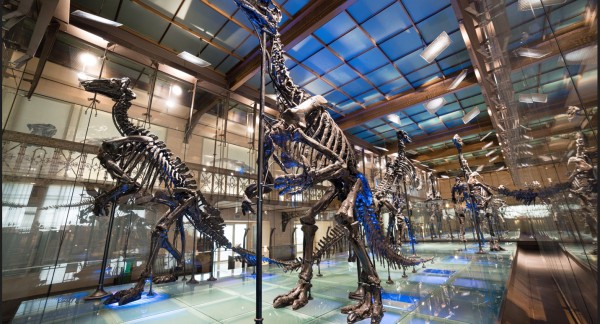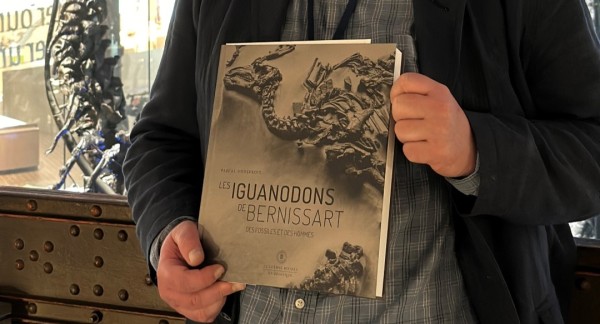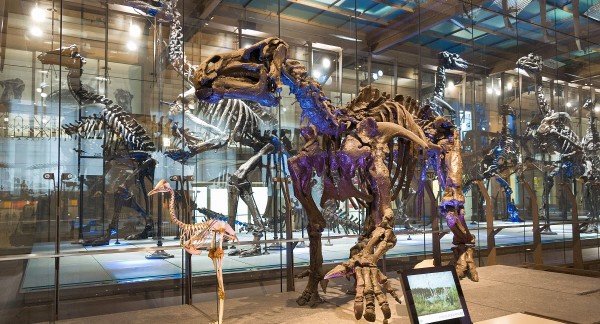New iguanodon species discovered in Portugal

A new species of plant-eating dinosaur has been discovered in Portugal: Cariocecus bocagei, an iguanodont from the Early Cretaceous with an exceptionally well-preserved skull. “We were even able to see the impression of the cerebral hemispheres and the auditory system,” says Filippo Bertozzo, palaeontologist at the Institute of Natural Sciences and first author of the study.
The skull was discovered at Praia do Areia do Mastro, a remote beach along the Atlantic coast near Cabo Espichel (Sesimbra), in western Portugal. The fossils were embedded in the Papo Seco Formation, a series of Early Cretaceous rock layers, rich in invertebrate fossils, and remains of fish, crocodiles, pterosaurs, and land-dwelling dinosaurs.

The new species was described in collaboration with the Sociedade de História Natural de Torres Vedras in Portugal. “We are extremely proud to introduce Cariocecus bocagei,” says Bertozzo. “It’s the result of months of collaboration between our two institutions.”
Fused upper jaw
The skull was discovered back in 2016, but the research could only properly begin after the COVID pandemic. In the lab of the Institute of Natural Sciences, the fragile fossil was carefully prepared by preparator Stéphane Berton. “Only once all the sandstone had been removed, we realized how exceptional the preservation was,” says Bertozzo.

The fossil includes the right side of the skull, parts of the skull roof, and a nearly complete braincase. Based on this material, the team identified anatomical features never seen in any other iguanodont species. “The maxilla and the jugal bone are completely fused. We’ve never seen that in any other iguanodont,” says Bertozzo. “It’s not a random abnormality. This is a truly unique trait – and therefore a new species.”

Inner ear and teeth
Micro-CT scans allowed the team to examine the cranial nerves and inner ear in exceptional detail — resulting in what they describe as the most detailed inner ear reconstruction ever made for a dinosaur. “A skull is always a special find,” says Bertozzo. “It tells us far more than isolated bones. In this case, we could even trace impressions of the brain and nerves, and reconstruct parts of the inner ear. The structure of the balance organs and auditory nerves gives us clues about how this animal lived and oriented itself.”
Another striking feature, he adds, is an unusually low “eyebrow” bone — lower than in any other known iguanodontian. “It likely supported a heavy brow ridge, possibly similar to those seen in modern eagles,” says Bertozzo. “That kind of structure may have had functional or even visual significance.” Based on the skull’s unossified sutures — the joints between bones that remain open in young animals — the team believes the individual was not yet fully mature when it died. Its skull would have measured about 45 cm in length.

The teeth of Cariocecus bocagei also offered surprising insights. Micro-CT scans revealed not only the visible teeth, but also replacement teeth embedded in the jaw — new teeth already forming to replace worn ones. This kind of tooth replacement is typical for iguanodonts, but it has rarely been observed so clearly in early species. Cariocecus may have had a more powerful bite than its relatives, which could explain the unusually robust skull and the fused jaw bones.
A world of iguanodonts
The species lived around 125 million years ago, during a time when iguanodontians — plant-eating dinosaurs with strong bodies and complex teeth — dominated the European continent. “The Early Cretaceous was truly an iguanodontian world,” says Bertozzo. “We already knew species from Belgium, Spain, Britain and France, but Portugal had no formally named species until now. This discovery fills that gap.”

The new species was named Cariocecus bocagei. Cariocecus refers to a war deity worshipped by Iberian and Lusitanian peoples in what is now central Portugal. The name also nods to the skull’s superficial resemblance to that of goats and horses—animals commonly sacrificed in rituals to Cariocecus. The species name bocagei honors 19th-century zoologist José Vicente Barbosa du Bocage, who played a key role in establishing zoological research and museum collections in Portugal.
The study was published in the Journal of Systematic Palaeontology.


